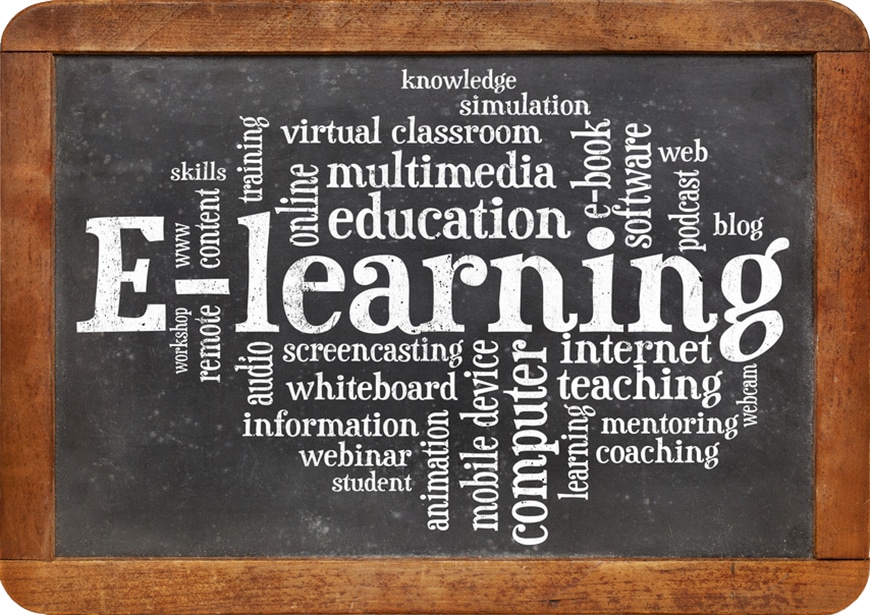 Even though it has been around for roughly 15 years, few things in diver training remain as controversial as eLearning. Just this past year, Dive Center Business published a scathing article pinning the blame for the current decline in equipment sales — at least in part — on eLearning. Many dive retailers and instructors will tell you, at length, what they don’t like about eLearning.
Even though it has been around for roughly 15 years, few things in diver training remain as controversial as eLearning. Just this past year, Dive Center Business published a scathing article pinning the blame for the current decline in equipment sales — at least in part — on eLearning. Many dive retailers and instructors will tell you, at length, what they don’t like about eLearning.
Despite this, eLearning is not going away. Distance learning has long been a part of corporate, university and government teaching programs. Its role will only increase in the years ahead. The dive industry, if anything, has been — and continues to be — behind the times when it comes to acceptance and implementation of eLearning.
Make no mistake: As millennials and Generation Xers make up a larger and larger part of our consumer base, the need to offer eLearning in order to remain competitive will increase.

The catch is, it is not enough to simply offer eLearning. You have to do so effectively. And to do that, you need to avoid these five, all-too-common mistakes.
5: Not understanding how it works
The Executive Director of one diver training organization once told me that he’d just fielded a call from an instructor who wanted to know which final exam he should administer to students who completed the agency’s Open Water Diver eLearning course.
The catch is, had the instructor taken the time to actually learn about the program he was offering, he would have not only discovered that a comprehensive final exam was built into the course, but how to review the results of that exam with students.
This shouldn’t be all that surprising. After all, how many instructors do you know who have yet to read the same textbooks as they assign to students?
Not all eLearning courses are the same, nor do they necessarily work the same. If you are going to offer eLearning, you and your instructors owe it to yourself and your students to actually read the directions.
Better still, don’t assign an eLearning course to students until you first complete that course yourself. That way, you will not only become familiar with the subject matter but also with how the course works, and how students will experience it.
Most agencies will provide eLearning signup codes to member instructors at no charge, for just this purpose. It’s an opportunity you should not pass up.
4: Not monitoring student progress
If the first night of class is also the first time you meet and interact with students, you are doing something very, very wrong. Even if using traditional learning materials, it’s vital to maintain ongoing contact with students prior to class to help ensure:
- The students are completing all required reading and homework assignments.
- They have purchased all of the required equipment.
- That all of their questions concerning the course have been answered.
This is equally true with eLearning. Most eLearning programs allow instructors to log in and monitor individual student progress. They generally provide a way for students to contact their instructor directly if they have questions. SDI goes so far as to offer students the ability to chat with a headquarters instructor, in real time, throughout their eLearning program.
3: Making eLearning optional
eLearning works best when handled as an all-or-none proposition. That is, you either have all of your students use eLearning, or none of them. This is for several reasons, including:
- It reduces confusion: In theory, a training agency’s eLearning course should cover material in exactly the same way as its written materials do. Guess what? They often don’t. Even a subtle change in how the same material is presented can lead to confusion.
- No one misses out: If you allow eLearning students to skip the classroom presentations everyone else is attending, you will invariably pass on information during these sessions that the eLearning students will miss.
- No one feels like a second-class citizen: This is a consequence of the previous point. When eLearning students discover they are missing out on important information, they will start to feel as though they don’t matter as much to you or your store.
You may elect not to use eLearning, or not to use it for specific courses, but whatever you do, do not make it an option for the same course.

2: Using eLearning to reduce contact hours
Training agencies originally promoted eLearning as a way to “reduce or eliminate time spent in the classroom.” Bad idea.
Students give us little enough time with them as it is. The last thing we want to be doing is cutting that time down even further.
Why? Experience has shown there is a direct relationship between time spent with students and sales. The more time you spend, the more you are likely to sell. It’s that simple.
Used correctly, eLearning can give you more time to get students out of the classroom and into the store, where you can talk about the things you most enjoy. This can include equipment, service, dive travel and continuing education. For example:
- Don’t just talk about exposure suits. Show students which exposure suits most customers prefer and why.
- Don’t just talk about the need for regular equipment maintenance. Show your students the repair department and describe some of the things that go on there.
- Show photos or video from your latest trip.
You get the idea. We discuss this further in the accompanying article, Maximize Contact Hours, Maximize Sales.
1: Not using eLearning
I don’t know what sort of a face I make when I hear someone tell me that the Earth is flat or cavemen rode dinosaurs. I would imagine, however, that it is similar to the face I make when I hear an instructor say, “eLearning isn’t as effective as a live instructor.”
Okay, let’s be honest here. All eLearning courses are not created equal. An extremely competent instructor, with a well prepared lesson plan, a host of informative visual aids, prepared note-taking materials for students and an engaging delivery style most likely can do a better job of teaching than a poorly constructed eLearning program. But how many of us are consistently that good?
According to Dive Training magazine Senior Editor Dr. Alex Brylske, countless studies have shown that, overall, eLearning results in better transfer of cognitive skills than traditional classroom lectures do — especially if they include videos and animations. In contrast, classroom lectures are generally rated as the least effective means of transferring cognitive skills.
“But you have to lecture to them,” instructors will say, “because students never do the assigned reading.” That’s only partially true. With each successive generation, students resist reading more and more — especially if you fail to maintain an ongoing dialog with them prior to class. But the solution is not to do away with self study, it’s to use more effective self-study materials.
Imagine if your students’ textbooks would not allow them to proceed to the next chapter until they had correctly answered a series of questions on the preceding chapter. Imagine that they only way they could correctly answer those questions was to read the chapter in depth, as opposed to merely skimming it.
That’s how eLearning works — and why well-structured eLearning courses are the single most effective means of transferring cognitive skills for most students.
Mind you, there are things we as instructors can do vastly better than computers do.
- A computer can’t get into the pool with students or accompany them on open-water training dives.
- Live instructors are also better at transferring affective skills (attitudes and beliefs) than any computer.
The problem we face today is that too many instructors are wasting time in traditional classrooms trying to teach cognitive skills. As a result, they don’t have time to get out of the classroom and teach the equally important affective skills.
Equally important, millennials and Gen Xers no longer have time for instructors who insist on teaching like it’s 1967. That’s why the single biggest mistake you can make with eLearning is to simply not use it. Failing to do so may make you feel good in the short term, but it’s going to cost you money in the long run.
Find out more
One of the most popular presentations at DEMA 2016 was Brian Carney’s How eLearning is Failing the Dive Industry. Brian is president of Scuba Diving International (SDI), the organization that pioneered eLearning for diver training at the turn of the century.
The main thrust of Brian’s presentation was that eLearning could very well be costing the industry sales — not because the concept is flawed, but because so many instructors are doing it wrong. If you missed Brian’s presentation, you can still watch it here.
